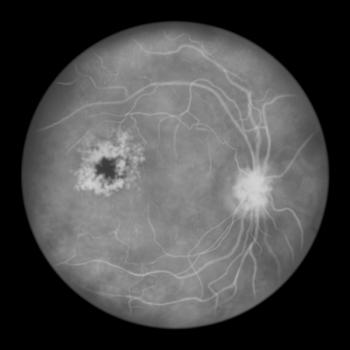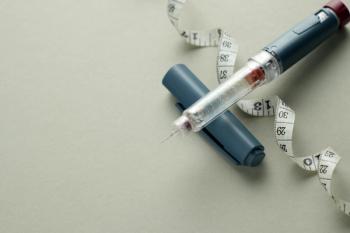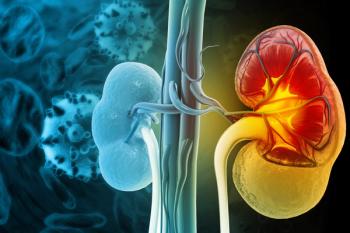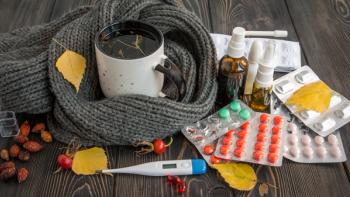
New Findings Show Standard HER2 Assays Miss Key HER2-Low Cases
Key Takeaways
- HER2 alterations are common in breast cancer, with subtypes affecting treatment response and eligibility for targeted therapies like T-DXd.
- Current IHC assays are reliable for HER2-positive detection but inadequate for HER2-low identification due to limited dynamic range.
Immunohistochemistry (IHC) assays with detection thresholds in the range of 30,000 to 60,000 HER2 molecules per cell yield accurate results for determination of trastuzumab deruxtecan (T-DXd, Enhertu; Daiichi Sankyo) eligibility. However, the authors note it fails to demonstrate the dynamic range for accurate HER2-low scores.
What Is HER2-Altered Breast Cancer?
HER2 alterations are some of the most common in breast cancer, accounting for nearly 70% of all cases. There are multiple HER2 subtypes, which are characterized by the expression of HER2 on breast cancer cells.1 Currently, there are 4 types of HER2 breast cancer2-5:
- HER2-positive: Characterized by an overabundance of the HER2 protein, which causes the cancer cells to grow and divide more rapidly
- HER2-negative: Characterized by low expression of HER2 proteins, often resulting in poor or no response to HER2-targeted therapies
- HER2-low: Characterized by a low expression of HER2 proteins and originally considered HER2-negative
- HER2 ultra-low: Characterized by an extremely low expression of HER2 proteins
One of the primary challenges with the detection of HER2-low and ultra-low subtypes is that HER2 assays often fail to detect low-expression levels. IHC assays were originally made to detect HER2 overexpression rather than underexpression, excluding a population of patients in need of care.6,7
HER2 assays are also used to determine T-DXd eligibility. Improved HER2 tests, such as IHC, is crucial for identifying patients with HER2-low breast cancer who would benefit from this therapy.6,7
“Patients with HER2-low cancers who could benefit from T-DXd may go untreated simply because the tests can’t measure expression levels precisely enough,” said Steve Bogen, MD, PhD, principal investigator of CASI-01 and CEO of Boston Cell Standards. “Calibration changes that. A patient’s treatment options should not depend on which lab performs their test.”6
What did the CASI-01 trial find?
The Consortium for Analytic Standardization in Immunohistochemistry (CASI) launched the CASI-01 study to address ongoing challenges in accurately identifying HER2 expression levels. The effort brought together 54 IHC laboratories in Europe and the United States to evaluate how well current assays distinguish between HER2 overexpression (3+), which guides T-DXd use, and HER2-low or ultra-low expression, which determines eligibility for T-Dxd.7
CASI-01 compared the standard FDA-cleared HER2 assay with higher-sensitivity tests, using both pathologist assessment and image-analysis tools. HER2 3+ results were verified against HER2 gene amplification by in situ hybridization (ISH), and new reference materials were introduced to test accuracy at the HER2-low range.7
The study found substantial variation in predicate assay sensitivity across laboratories, with detection thresholds ranging from 30,000 to 60,000 HER2 molecules per cell. Even with this variability, these assays remained reliable for identifying HER2-positive tumors, showing 85.7% sensitivity and 100% specificity. However, they performed poorly when classifying HER2-low tumors due to limited dynamic range.7
Higher-sensitivity assays combined with image analysis significantly improved performance, delivering a six-fold gain in accurate HER2-low detection (P = .0017).7
Are Current HER2 Assays Built for the Era of HER2-Low Therapies?
CASI-01 demonstrates that while current assays adequately support trastuzumab decision-making, they fall short for HER2-low identification which is a growing need in the era of T-Dxd. Increasing analytic sensitivity and incorporating image analysis can close this gap. The findings also highlight two broader advances: the importance of reporting an assay’s analytic sensitivity and dynamic range, and the potential for image analysis to exceed traditional pathologist scoring in certain diagnostic scenarios.
“As therapies expand to include HER2-low disease, the need for precise and reproducible HER2 testing has never been greater,” said Emina Torlakovic, MD, PhD, FCAP, study co-author, board-certified anatomic and clinical pathologist and hematopathologist; director of Canadian Biomarker Quality Assurance academic program; and division head of Hematopathology, Dept. of Pathology & Laboratory Medicine, Saskatchewan Health Authority and University of Saskatchewan.
“Whereas current methods of IHC assay validation are insufficient to support the needs of precision medicine, by enabling an objective quantification of analytical sensitivity, we can now reliably evaluate the accuracy and precision of IHC assays for targeted therapies.”
REFERENCES
1. Gerlach A. SHR-A1811 plus pertuzumab improves survival in HER2-positive metastatic breast cancer. Pharmacy Times. November 14, 2025. Accessed November 21, 2025. https://www.pharmacytimes.com/view/shr-a1811-plus-pertuzumab-improves-survival-in-her2-positive-metastatic-breast-cancer
2. HER2-positive breast cancer. Cleveland Clinic. August 28, 2023. Accessed November 21, 2025. https://my.clevelandclinic.org/health/diseases/25213-her2-positive-breast-cancer
3. HER2-Negative Breast Cancer. Cleveland Clinic. February 26, 2025. Accessed November 21, 2025. https://my.clevelandclinic.org/health/diseases/her2-negative-breast-cancer
4. Adams M. HER2 low breast cancer expert: Precise diagnosis can lead to personalized treatment. MD Anderson Cancer Center. October 31, 2022. Accessed November 21, 2025. https://www.mdanderson.org/cancerwise/her2-low-breast-cancer-expert--precise-diagnosis-can-lead-to-personalized-treatment.h00-159542901.html#:~:text=In%20a%20clinical%20trial%20called,understanding%20HER2%20and%20breast%20cancer
5. Chen Z, Jia H, Zhang H, et al. Is HER2 ultra-low breast cancer different from HER2 null or HER2 low breast cancer? A study of 1363 patients. Breast Cancer Res Treat. August 28, 2023. doi: 10.1007/s10549-023-07079-8
6. Boston Cell Standards: Calibration transforms accuracy in HER2-low breast cancer testing. BusinessWire. November 19, 2025. Accessed November 21, 2025. https://www.businesswire.com/news/home/20251119253545/en/Boston-Cell-Standards-Calibration-Transforms-Accuracy-in-HER2-Low-Breast-Cancer-Testing
7. Dabbsa D, Torlakovica E, Nielsen S, et al. New standards in HER2-low testing: the CASI-01 comparative methods study. Lancet: eBioMedicine. September 12, 2025. doi: 10.1016/j.ebiom.2025.105919
Newsletter
Stay informed on drug updates, treatment guidelines, and pharmacy practice trends—subscribe to Pharmacy Times for weekly clinical insights.












































































































































































































